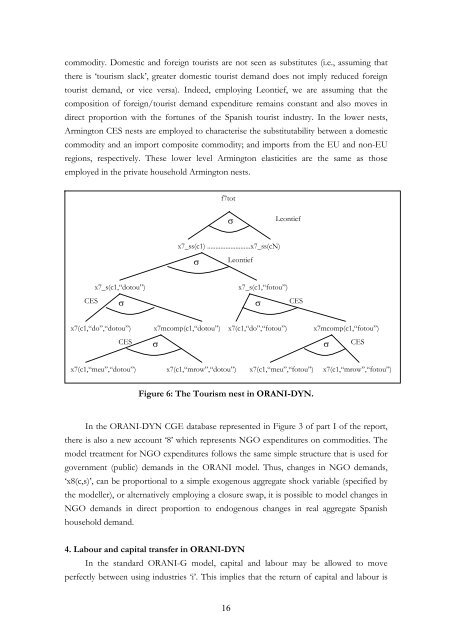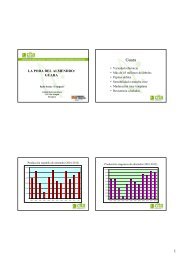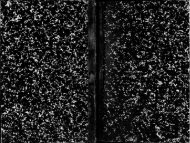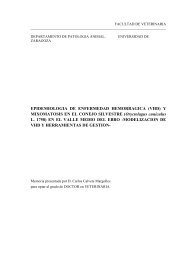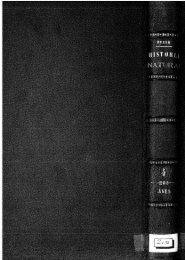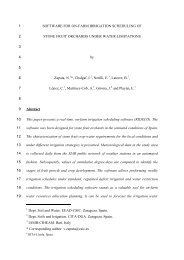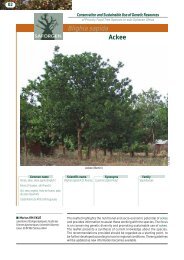1 A Recursive Dynamic Computable General Equilibrium Model For ...
1 A Recursive Dynamic Computable General Equilibrium Model For ...
1 A Recursive Dynamic Computable General Equilibrium Model For ...
Create successful ePaper yourself
Turn your PDF publications into a flip-book with our unique Google optimized e-Paper software.
commodity. Domestic and foreign tourists are not seen as substitutes (i.e., assuming that<br />
there is ‘tourism slack’, greater domestic tourist demand does not imply reduced foreign<br />
tourist demand, or vice versa). Indeed, employing Leontief, we are assuming that the<br />
composition of foreign/tourist demand expenditure remains constant and also moves in<br />
direct proportion with the fortunes of the Spanish tourist industry. In the lower nests,<br />
Armington CES nests are employed to characterise the substitutability between a domestic<br />
commodity and an import composite commodity; and imports from the EU and non-EU<br />
regions, respectively. These lower level Armington elasticities are the same as those<br />
employed in the private household Armington nests.<br />
f7tot<br />
x7_ss(c1) ..........................x7_ss(cN)<br />
x7_s(c1,“dotou”) x7_s(c1,“fotou”)<br />
σ<br />
Figure 6: The Tourism nest in ORANI-DYN.<br />
In the ORANI-DYN CGE database represented in Figure 3 of part I of the report,<br />
there is also a new account ‘8’ which represents NGO expenditures on commodities. The<br />
model treatment for NGO expenditures follows the same simple structure that is used for<br />
government (public) demands in the ORANI model. Thus, changes in NGO demands,<br />
‘x8(c,s)’, can be proportional to a simple exogenous aggregate shock variable (specified by<br />
the modeller), or alternatively employing a closure swap, it is possible to model changes in<br />
NGO demands in direct proportion to endogenous changes in real aggregate Spanish<br />
household demand.<br />
4. Labour and capital transfer in ORANI-DYN<br />
In the standard ORANI-G model, capital and labour may be allowed to move<br />
perfectly between using industries ‘i’. This implies that the return of capital and labour is<br />
σ<br />
16<br />
Leontief<br />
Leontief<br />
CES σ σ CES<br />
x7(c1,“do”,“dotou”) x7mcomp(c1,“dotou”) x7(c1,“do”,“fotou”) x7mcomp(c1,“fotou”)<br />
CES σ σ CES<br />
x7(c1,“meu”,“dotou”) x7(c1,“mrow”,“dotou”) x7(c1,“meu”,“fotou”) x7(c1,“mrow”,“fotou”)


